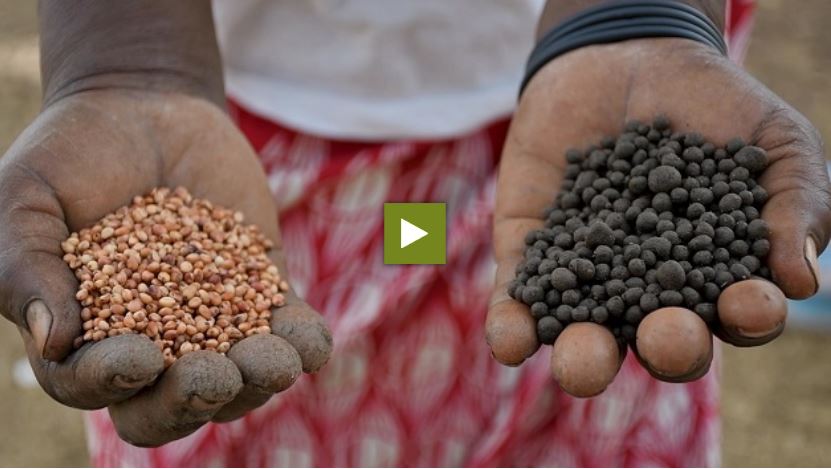»Organic seed coating (Summary)«
For thousands of years, farmers in semi-arid areas have grown cereal crops such as sorghum and millet and developed clever strategies to cope with drought.
Because most soils in west Africa have very little organic matter, many farmers sow their seeds in shallow pits filled with composite manure. In these so-called Zai planting pits, rainwater, organic matter, and nutrients are concentrated exactly where the plants need them. But with a changing climate, the first rains of the rainy season have become even more unpredictable. If an early rain is followed by a long period of drought, germinated seeds easily die. Also, birds and insects feed on the planted seeds, so farmers have to sow again.
Coating Seeds
By coating seeds with clay, compost, and ash, the seed is disguised and safe from being eaten. Pound four kilograms of clay with two kilograms of compost and one kilogram of ash, so it becomes dust; this is enough to coat one kilogram of seed. Slightly moisten the seed and dust it with the powder. Shake the seed until it‘s evenly coated. Moisten again and coat some more. Shake for a few minutes until evenly coated. Try and sow the seed the next day or store in a bag for later sowing.
Seed Coating Benefits
The organic coat protects your seed from birds and insects and gives the young seedlings extra moisture and nutrients, all you need for a good start of your crop.
It is advisable to farmers to coat their seed; it‘s a great help and very beneficial. It helps us to start sewing very early; it preserves our health; it makes our work easier.



















